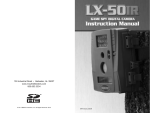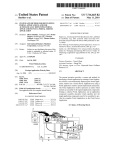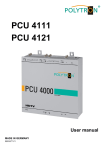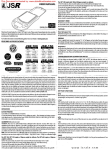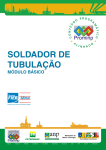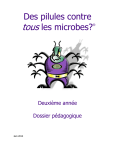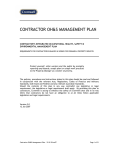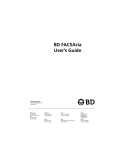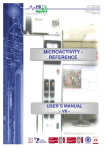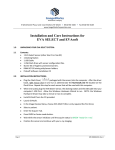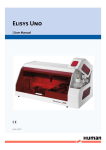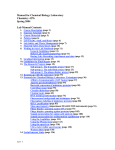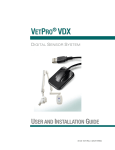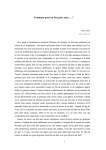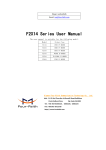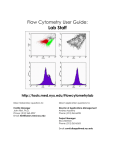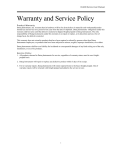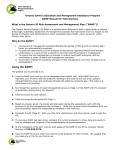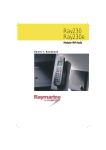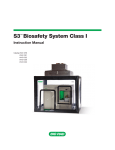Download safety manual and standard operating
Transcript
SAFETY MANUAL AND STANDARD OPERATING PROCEDURES FOR THE OCSCytometry Core NEW YORK UNIVERSITY SCHOOL OF MEDICINE Skirball Institute, Laboratory 3-8 back Created: January2014 Version: 001 Approval Date: Effective Date: Approved by: Peter Lopez Director Gerry Griffin Associate Director, Environmental Health and Safety Mark Olmsted Environmental Specialist II, Environmental Health and Safety Written by: Michael Gregory Laboratory Manager Mark Olmsted Environmental Specialist II, Environmental Health and Safety Table of Contents List of Key Personnel .....................................................................................................1 Important Telephone Numbers .....................................................................................1 OCSCytometry Core Laboratory Layout........................................................................2 1. Background ..................................................................................................................................... 3 1.1 High-speed Cell Sorting ....................................................................................... 3 1.2 Definition of Biohazardous Specimens ........................................................... 3 1.3 General Information about HIV ........................................................................ 3 2. Risk to Lab Personnel.................................................................................................................. 3 3. Containment .................................................................................................................................. 4 3.1 Facility Layout ............................................................................................................... 4 3.2 Laboratory Facilities ................................................................................................... 4 3.3 Biosafety Cabinets (BSCs) and Aerosol Management Unit ............................. 4 3.4 Biohazard Labels .......................................................................................................... 5 4. Facility Entry and Exit ............................................................................................................... 5 5. Training ........................................................................................................................................... 5 6. Medical Requirements, Surveillance, and Responses to Exposure ............................... 5 6.1 Medical Requirements ................................................................................................ 5 6.2 Medical Surveillance ................................................................................................... 5 6.3 Medical Response to Exposure ................................................................................. 5 7. Standard Operating Procedures (SOPs) for the Skirball 3-8 Laboratory ...................... 6 Standard Operating Procedures (SOPs) FLOW-101Standard Laboratory Practices for the Skirball 3-8 Laboratory .......... 7 FLOW-102Spill Response and Reporting ................................................................... 15 FLOW-103Exposure Incidents and Reporting ......................................................... 16 FLOW-104Shipping and Receiving Infectious Substances and On-campus Transportation of Biological Samples .......................................................... 18 FLOW-105Medical and Facility Emergencies .......................................................... 19 BSL-2 Sorting User Approval ....................................................................................................... 21 Core Facility Spill / Accident Report ........................................................................................ 22 List of Key Personnel Name Peter Lopez Michael Gregory Keith Kobylarz Title Director Lab Manager Lab Technician Extension x30635 x35907 x35907 Mobile 646-469-3399 516-641-5185 718-664-8633 Kamilah Ryan Lab Technician x35907 917-715-5337 Nicole Hanson Lab Technician x35907 520-465-2001 Important Telephone Numbers Note: In an emergency, Communications can page personnel from key departments Any Medical Center Emergency x33911 Building Services x35071 Communications x37403 NYULMC Urgency Care Center (UCC) x35550 NYULMC Emergency Room (ER) – Available May 2014 TBD Occupational Health Services x35020 Environmental Health and Safety (EH&S) x35159 Mark Olmsted, Environmental Specialist II x35161 Gerry Griffin, Associate Director x36944 NYULMC Facilities Management x35275 Poison Control Radiation Safety (212) 7647667 x36888 Security x73000 Environmental Services X34930 1 Skirball Laboratory Layout 2 1. Background 1.1. General Information The BSL-2cell-sorting laboratory is located on the 3rd floor of the Skirball Institute, in the back room of laboratory 3-8. A locking door restricts access to this facility. The facility includes a front room, used to store laboratory supplies and housing instruments not requiring containment. The main laboratory room contains two class IIB re-circulating biosafety cabinets, one housing the cell sorting instrument and one for sample preparation/tissue culture. Special instrumentation is employed in this area to contain potential aerosols and reduce operatorexposure. For more detailed information please see the CDC web site: http://www.cdc.gov/od/ohs/biosfty/biosfty.htm 2. Risk to Lab Personnel 2.1. Definition of Biohazardous Specimens All unfixed human and primate cell suspensions and tissues must be treated as potentially infectious, and handled in accordance with universal precautions for blood borne pathogens (i.e., handle as if infected with HIV, HBV, HCV etc.). This applies to cultured cell lines as well as primary tissue suspensions (e.g., blood, bone marrow, cells derived from solid organs). It also applies to nonhuman cells that have been deliberately infected with known or potential human pathogens. Although standard BSL-2 working conditions are usually acceptable for handling such specimens, the potential of cell sorters to generate high levels of aerosolized microdroplets require additional precautions. For the purposes of high speed cell sorting, specimens considered to be potentially biohazardous include all of the following: • • • • Suspensions of primary human or primate cells from blood or other tissues. Cultured and in vitro passaged human or primate cell lines. Note that with few if any exceptions, established human cell lines may fall into the “potentially biohazardous” category, and therefore cannot be sorted unless specific recommendations for sorting biohazardous specimens are followed. Primary cells or cell lines that have been transformed with an immortalization agent that has the potential to transform human cells, such as Epstein-Barr virus or a potentially oncogenic retrovirus or lentivirus. Any samples known to contain or have been exposed to infectious pathogens normally handled at BSL-2 conditions. This includes agents such as viruses (HIV, HCV, HBV, CMV, EBV, influenza, etc.), bacteria (Listeria, BCG and other attenuated mycobacteria, staphylococci, streptococci, various Gram negative pathogens, etc.), fungi (Cryptococcus, histoplasma, aspergillus) and protozoa (Toxoplasma, some plasmodia, cryptosporidia, etc.). 2.2. High-speed Cell Sorting High speed droplet based cell sorters can generate large amounts of aerosols, and recently published standards now specify a much higher level of biocontainment for cell sorting of unfixed human cells or other potentially biohazardous samples than have been traditionally followed. “If aerosol containment is incomplete, the safety features of the cell sorter must be modified such that no escape of aerosol can be detected. Alternately, sorters can be placed inside a biosafety containment cabinet” (Ref: I Schmid et al., International Society for Analytical Cytology Biosafety Standard for Sorting of Unfixed Cells. Cytometry Part A, 71A:414-437 3 (2007)). Sorting of samples that represent potential toxic or infectious exposures via the aerosol route therefore require special procedures and laboratory conditions. This is true even for agents that are normally handled under standard BSL-2 laboratory conditions, such as primary human cell suspensions or cell lines. The heightened concern in the case of cell sorting arises from the possibility that cells or microorganisms may be delivered directly into the lungs of personnel in the vicinity of a cell sorter. In theory, this could increase the risk of infection with an occult pathogen, transfer of genetic material, sensitization to antigens or other potentially harmful effects. Although such adverse effects have not been documented as a consequence of exposure to aerosols during cell sorting, there is sufficient concern about this to warrant the implementation of procedures to eliminate any excess risk to personnel. 3. Containment 3.1. Facility Layout 3.1.1. The Skirball OCS Cytometry Core Laboratory is a Biosafety Level 2 (BSL 2) certified facility that is located in NYUMC’s Skirball Institute, Laboratory 3-8. 3.1.2. The facility is cleaned and maintained by the laboratory staff supplemented by Collins Building Services (CBS) a contractor managed by Environmental Services. 3.2. Laboratory Facilities 3.2.1. The laboratory has one sink for hand washing near the entrance to the back roomof Skirball 3-8. An eye wash station is located near the sink. Anemergency shower is located down the hall just inside lab 9. The eyewash within the lab can serve the function of the emergency shower. 3.2.2. The eye wash station and emergency shower are maintained and inspected by the NYULMC Facilities Department (212-263-4930). 3.3. Biosafety Cabinets (BSCs) and Aerosol Management Unit 3.3.1. There is one threefoot Baker SteriGardIII AdvanceClass II BSC, and one modified Baker SteriGard Class II BSC located in the facility. The modified BakerSteriGard cabinet both houses the SY3200 Flow Cytometer and provides extra bench space for sample preparation. Name/ Room# Baker SteriGard III Advance Baker Modified SteriGard Room SK 3-8 Model SG303 BSC Serial No. 91620 SK 3-8 SG405A-HE 107613 3.3.2. Certification of BSCs - Environmental Health and Safety (EH&S) retains a vendor (Technical Safety Services, Inc. www.techsafety.com) who certifies each BSC annually. The certification is conducted in accordance with NSF Standard 49 and currently accepted best practices. 3.3.3. Aerosol Management – The modified Baker SteriGard cabinet contains a separate Aerosol Management System to remove and filter aerosols from the cytometer’s interior compartments. The unit is integrated into the cabinet and uses the cabinet’s filters. This unit is used to quickly purge the sort chamber in the event of an instrument clog. 4 3.4. Biohazard Labels All equipment used for storage of infectious agents must have biohazard labels specifying the agent(s) stored. 4. Facility Entry and Exit 4.1. Refer to SOP FLOW-101 5. Training Prior to being allowed independent access to or performing work independently in the facility, all personnel will be trained by an approved lab user and must be approved by the Director of theOCSCytometry Core. Training will include knowledge of the Safety Manual and approved protocols, followed by observation of a certified user performing the intended procedures. Then the trainee will work under supervision of a certified lab user until the certified user gives approval and has successfully completed all training requirements outlined in Form FLOW-101F(BSL-2 Sorting User Approval ). A copy is at the endof this manual), for the new user to be certified to enter the core or work independently in the facility. 6. Medical Requirements, Surveillance, and Responses to Exposure 6.1. Medical Requirements Workers with a known immunodeficiency disease or who are taking immunosuppressive medications are not permitted to work in the sorting room without prior approval by the OCS Cytometry Core Director, EH&S, andOccupational Health Services. Workers with open wounds that cannot be adequately covered cannot work in the sorting room. Occupational Health Services can provide medical advice to workers who are not sure whether they fall into any of these exclusionary categories. 6.2. Medical Precautions and Surveillance AllNYULMC personnel working with patient samples are offered a Hepatitis B (HBV) vaccination at their health screening. Personnel beginning to work with bloodborne pathogens or other potentially infectious materialscan obtain an HBV immunization by contacting Occupational Health Servicesat 212-263-5020.Occupational Health Services can also test whether an HBV immunization is still effective. Baseline HIV testing is required before working with biohazardous HIV-infected samples. HIV testing can be obtained at the NYULMCOccupational Health Servicesby contacting them at 212-263-5020. HIV testing is required subsequently in cases of accidental or suspected exposure. Personnel are also encouraged to speak to their primary care physicians about regular HIV testing. Non-NYULMC employees are responsible for maintenance of their HBV immunizations and for their own HIV testing. 6.3. Medical Response to Exposure Procedures for management of exposure due to cuts are detailed in Safety Policy 135, Bloodborne Pathogens Exposure Control Program. These procedures apply to all NYULMC employees and as such apply to all employees working in the OCSCytometry Core. These procedures are stated below. 5 All cuts and other exposures to blood or other body fluids must be reported immediately to Occupational Health Services, if not open at that time, to the Urgent Care Center (ER) in the HCC building or Emergency Room in the Tisch building. The worker should also notify the OCS Cytometry Core Director and the Study Principal Investigator as soon as possible, after appropriate emergency care has been obtained. Follow-up treatment for all exposures in the OCSCytometry Core will be advised by, offered by or arranged by Occupational Health Services, Urgent Care Center, or the ER. Form FLOW102F BSL-2 Spill/Accident Report should be filed with the Laboratory Manager. 7. Standard Operating Procedures (SOPs) for the OCSCytometry Core 7.1. A dedicated set of SOPsand forms are to be followed and used by all personnel using the OCS Cytometry Core. The currently approved SOPs and forms pertaining specifically to the virus laboratory are on the following pages of this safety manual and are listed below: Document No. Name SOP FLOW-101 Standard Laboratory Practices for the OCSCytometry Core Skirball Cell Sorting Laboratory SOP FLOW-102 Spill Response and Reporting SOP FLOW-103 Exposure Incidents and Reporting SOP FLOW-104 Shipping and Receiving Infectious Substances and Oncampus Transportation of Biological Samples SOP FLOW-105 Medical and Facility Emergencies Form FLOW101F Form FLOW102F BSL-2 Sorting User Approval Core Facility Spill/Accident Report 6 Standard Operating Procedures Title: Standard Laboratory Practices for the OCSCytometry Core Skirball Cell Sorting Laboratory SOP#:FLOW-101 Purpose: To provide safe handling procedures and operations for all personnel working in the facility 1. Materials Item Lab Coats Safety Glasses Gloves Manufacturer Jackson Safety Evolution One 200 Proof Ethyl Alcohol Bleach Kim Wipes FACSFlow Sheath Alcohol Swabs SortCal GloGerm Beads Clorox KimTech BD BD Sony BioTech GloGerm Catalog No. NYU Building Services 19706-002 Small EV-2050-S Medium EV-2050-M Large EV-2050-L NYU Requisition Staples# CLO 02489 34155 342003 366894 700002 - 2. Restricted Access 2.1. Entry into the OCSCytometry Core Laboratory is restricted to authorized individuals who have received medical clearance from Occupational Health Services, have taken the Intro to Biosafety training, the OSHA Bloodborne Pathogensself study, and reviewed the SOPs for the OCSCytometry Core Laboratory. 2.2. NYULMC’s EH&S departmentwill be granted access to conduct unannounced inspections. 2.3. Entry into the OCSCytometry Core is restricted by a keyed lock and users must always be accompanied by a member of the Flow Core Staff unless otherwise authorized. 2.4. During sorting of potentially infectious agents, access to the laboratory will be restricted. 3. General Facility Requirements 3.1. Use ofneedlesand other sharp instruments will not be used when biohazardous samples are present. 3.2. All cuts in the skin must be covered with a bandage. 3.3. No food or drinks are allowed. 3.4. No open-toed shoes are to be worn in the facility. 3.5. No jewelry (other than wedding bands) is to be worn under gloves. 3.6. No mouth pipetting is allowed in the facility. 3.7. All samples must be labeled with name, date and specimen type with a water/alcohol resistant marker. 3.8. Post-sort clean up should follow procedures listed in the Decontamination and Exit out of the 7 OCSCytometry Core sections of this SOP. 4. Reagents and Supplies 4.1. All samples that are transported to the OCSCytometry Core must be contained using approved secondary containers. Refer to SOP FLOW-104 4.2. Unopened, non-infectious, non-toxic reagents and supplies may bestored in the front room of SK 3-8. 5. Entry to the OCS Core Laboratory and Personal Protective Equipment (PPE) 5.1. All outside clothing not worn under a lab coat must be left in the front room of SK 3-8. Bags and anything not to be used in the Core Laboratory should be left there as well. 5.2. Wearing two pairs of gloves is advisable. They are disposed when overtly contaminated and removed when work is completed or integrity is compromised. Small, medium and large (latex or nitrile)gloves are available to the left of the entrance to the room, and should be worn at all timesThey will be sprayed with 70% ethanol or isopropyl alcohol as necessary and are not to be worn outside the lab. 5.3. Lab coats are available on a coat rack next to the refrigerator in the front room of SK 3-8 and are to be worn at all times while inside the lab. If a different size is needed, coveralls or surgical gowns can be supplied. Non-disposable lab coats are laundered on a regular basis by NYULMC Building Services. 5.4. The laboratory door should remain closed except when entering and exiting the lab. 6. Aerosol generating procedures All transfers of biohazardous materials from one container to another container must take place within aBSC. Such transfers may not take place on the open bench. All other procedures that could generate aerosols must also be conducted in a BSC. The following are examples of these procedures: • Mixing ofsamples with a pipette; • Using high speed mixing devices like vortexers; • Opening of centrifuge buckets; and • Opening a package containing an infectious pathogen. 7. Use of SY3200 Flow Cytometer and modified Baker SteriGard BSC Considering the containment measures in place for the Sony SY3200 cell sorter (see section 7.2), the sorter’s use is not considered a high-risk procedure. However, in order to ensure optimal safety, certain procedures need to be followed during setup, use and shutdown of the instrument. The Sony SY3200 cell sorter is operated according to the manufacturer’s manual (available at NYULMC OCS Flow Cytometry Facility Core). 8 7.1 Startup protocol Machine startup steps should be performed in the following order: Procedure Check sheath, waste and diH20 levels. Turn on Air and Vacuum lines. Turn on BSC and Sony SY3200 cell sorter. Run “Startup” using the SY3200 software. Align and setup sorter as per the manufacturer’s user manual. Comments Sheath should not be added unless waste tank is emptied. See section 7.4.4 for emptying waste. Add sheath and diH20 as necessary. Ensure vacuum filter is dry. Replace if necessary. Machine and blower should be on for 15 minutes before use. Verify vacuum system is clearing waste stream No sample should be placed on the sorter until these steps have been completed. 7.2 Clog or failure protocol In the event of a clog, the stream may lose stability and generate an aerosol. The stream should be turned off immediately and the sample removed. Any aerosol should be contained within the sort block and filtered out by the Aerosol Management System(AMS). If the stream restarts correctly, the sort can continue. If the clog persists, the nozzle must be removed and cleaned or replaced with a secondary stand-by nozzle If the nozzle must be removed for cleaning, it should be treated as biohazardous. After determining that the nozzle needs to be removed, the operator should activate the AMS and wait 60 seconds for any aerosol to clear from the interior compartments. The stream should be turned off, and the nozzle taken out of the machine. The nozzle should be placed into a 5mL tube, filled with 10% Contrad detergent, which is then capped. This tube is then placed into the sonicator for cleaning. After sonication, the capped tube is opened and the cleaned nozzle can be removed once back in the BSC. Prevention of clogs by filtering all samples through a 70um cell strainer (or smaller) will greatly reduce the likelihood of aerosol generation, and is therefore required. Samples should be filtered prior to delivery to operator, though strainers will be available in the sorting room to restrain particularly problematic samples. In the event that the vacuum line fails, an aerosol can be created where the stream enters the waste catcher. Any aerosol should be contained within the sort block and filtered out by the AMS. Turn the stream off immediately and attempt to resume house-supplied vacuum. If unable, the sorter should not be used until facilities have resolved the issue. 7.3 Shutdown protocol After sorting is completed, follow the protocol below for sort shutdown: Procedure Remove Collection tubes from sort chamber. Comments Wait at least 60 seconds after stream is turned off before opening sorting chamber in order to allow 9 Remove all sample and infectious material from sorter and hood. Run a tube of 10% bleach for 10 minutes and run the sample line decontamination procedure (7.3.1) Wipe down all surfaces with 70% ethanol or RelyOn wipes. Empty waste tank. Shutdown software, Synergy, and air and vacuum lines. aerosol evacuation. All waste tubes should be capped and placed in waste bag. Waste bag should be sealed and sprayed before removal. This will decontaminate all sample tubing Both surfaces inside and outside the hood should be decontaminated as in Section 4.4.2. Waste needs to be decontaminated before disposal. See section 4.4. 7.3.1 Sample line decontamination procedure In the Sony SY3200 Softwareensure the flow is switched from Sheath to Rinse. Load a tube filled with 10% bleach to a volume greater than that of the sample just run. Load and run the bleach through the sample lines. Toggle sample flow on and off to ensure that the entire nozzle is disinfected. Repeat above procedure with a tube of diH20 to rinse out the bleach. This procedure ensures that ALL tubing that is exposed to sample during regular operation is disinfected. These surfaces include the sample tubing, the pinch valve tubing and surfaces in the flow body and nozzle. 7.4 Maintenance/decontamination 7.4.1 Sony SY3200 cell sorter waste disposal All material entering the sorter’s waste tank should be considered biohazardous and must be disinfected before disposal down the sink in the cell sorting laboratory. To accomplish this, enough bleach should be added to the waste tank before use to result in a 10% concentration when full. Bleach solution must be in contact with contaminated waste fluid for a minimum of 30 minutes before disposal. Since bleach is corrosive to stainless steel, the inside of the tank should be visually inspected after emptying to confirm integrity has not been compromised. 7.4.2 Surface disinfection After sorting all surfaces inside the hood and in the Synergy’s interior compartments should be disinfected with 70% ethanol. Surfaces outside the hood that may have accidentally become contaminated should be decontaminated with70% ethanol as well. This includes computer desk surfaces, as well as the keyboard and mouse. If the protective covers on the keyboard and mouse have become soiled, they should be disposed of and replaced before the next sort. 7.4.3 Synergy fluidics decontamination This procedure should be run on a monthly basis or when the machine’s fluidics have 10 become contaminated. 1. Remove sheath and diH2O filters and replace with bypass connectors. 2. Fillsheath and diH2O tanks with 10% Bleach solution. 3. Re-pressurize the fluidics and start streamwith liquid form the rinse tank for 15 minutes. 4. Switch over to liquid from the sheath tank for 15 minutes. 5. Run 10% bleach sample line during steps 3 and 4, cycling all valves to ensure they are cleaned appropriately. 6. Empty both the sheath and waste tanks rinsewith diH2O. 7. Fill both tanks with diH2O. 8. Run stream with diH2O for 15 minutes from sheath tank and then 15 minutes from waste tank. Run diH2O on the sample port during these rinses. 9. Re-fill diH2O tank with diH2O and the sheath tank with sheath fluid. 10. Replace sheath and diH2O filters with new filters and prime system. 7.5 Aerosol containment test In order to ensure containment of aerosols by the Aerosol Management System (AMS) and BSC, the aerosol containment testing protocol should be used at a minimum after service of the Sony SY3200 cell sorter. The equipment used in this protocol include a fluorescence microscope, and Glo Germ™ beads, as well as an E-Lite Pump™ and an Air-O-Cell™ cassette, both supplied by EMSL Analytical, Inc. The test protocol is adapted from the sampling guide available from the manufacturer. The protocol follows: - Prior to sampling, calibrate the pump to 15 liters per minute. - Remove and retain tape seal covering Air-O-Cell™ inlet and outlet. - Attach the outlet (round hole) to the supplied tubing adapter, positioning the inlet within 1 foot of the sort chamber. The sort chamber cover should be removed. - Begin sorting Glo Germ™ beads at 20,000 events per second and simulate an aerosol causing clog by moving the waste catcher. - Start the sampling pump, and sample for 10 minutes. - Remove Air-O-Cell™ from tubing, and reseal with the original tape. Label sample. For a positive control, the above steps should be repeated with the aerosol containment tubing pinched closed. - Extract coverslip from inside of cassette, lay on slide and image using the fluorescent microscope. Count Glo Germ™ beads seen. Aerosol containment is considered maintained when less than 2 beads are present per coverslip. Ensure that the positive control is run AFTER the test sample. 7.6 Service Field service engineers when working on the SY3200 are required to abide by this SOP. 8. Use of Baker SteriGard III AdvanceClass II Type A BSC 8.1. Before working in the BSC, the blowers and fluorescent light are switched on, and a 11 biohazard bag, a spray bottle of 70% isopropyl alcohol, wipers, and pre-saturated wipes are placed in the cabinet. The blowers must be left on for 15 minutes before use. 8.2. All materials needed to complete the experiment are placed in the cabinet to limit the number of times hands pass through the air barrier. Equipment is not to be placed on the intake grills at the front of the cabinet, nor blocking the exhaust opening at the back of the cabinet. 8.3. A biohazard bag should be present in the cabinet. Absorbent material (such as a dry cleanroom wiper) is placed in the bottom of the biohazard bag. This bag is used for discarding solid waste (gloves, plastic waste, pipette tips). Once the bag is full, it is closed, wiped with 70% isopropyl alcohol and taken out of the cabinet to be collected into a larger covered waste container next to the cabinet. 8.4. Liquid waste should be put into a dedicated container inside the BSC with sufficient sodium hypochlorite to achieve a final concentration of 10% and allowed to react for a minimum of 30 minutes before disposal. Wipe or spray the outside of the container with 70% ethanol or isopropyl alcohol before removing it from the cabinet. The decontaminated liquids are then disposed of down the sink and flushed with large amounts of tap water. 8.5. Vacuum waste flasks should contain enough bleach to result in a 10% solution. They should never be filled more than 50%. An in-line vacuum filter must be present between the flask and the vacuum source. 8.6. Contaminated pipettes should be disposed of in the biohazard bags. 8.7. Anything removed from the BSC during the work session is to be decontaminated by wiping with 70% isopropyl alcohol while still in the BSC. 8.8. At the end of each work session, culture tubes, racks and other material to be removed from the cabinet are decontaminated by wiping with 70% isopropyl alcohol while still within the BSC. 8.9. The wipers used during cleaning along with the outer gloves are placed into a biohazard bag while still within the BSC. Wipe or spray the outside of the bag with 70% isopropyl alcohol. Place the bag into a larger covered biohazard waste container next to the cabinet. 8.10. A fresh pair of outer gloves is donned and the hood is now wiped down completely with 70% isopropyl alcohol. 8.11. All tissue or cell culture related materials should be disposable whenever possible. Only disposable plastic pipettes and plastic tubes are to be used in the facility. 9. CO2 Incubators The following is a list of safety practices and procedures for doing work involving the use of cell culture incubators. 9.1. Flasks and culture plates shall be carried to and from the incubator using plastic secondary containers. 9.2. In the event of bacterial or fungal contamination in the incubators, flasks and culture plates 12 shall be moved to a BSC. Shelves shall be wiped down with 70% isopropyl alcohol and shelves should be sterilized in an autoclave. 9.3. Gloves must be worn when handling cultures. 9.4. Prior to maintenance, equipment must be decontaminated. 10. Centrifuge The following is a list of safety practices and procedures for doing work involving the use of centrifuges. 10.1. Rotor buckets and lids shall be sprayed with 70% isopropyl alcohol and placed in the BSC prior to loading. 10.2. Samplesshall be loaded into rotor/rotor buckets and sealed with the cap for the rotor bucket while in BSC. 10.3. After centrifuging, rotor/rotor buckets shall be moved to BSC to unload samples. Samples shall NOT be unloaded in the open room. 10.4. Centrifuge and rotor chambers shall be disinfected with 70% isopropyl alcohol soaked wipers following use. 10.5. Prior to maintenance, equipment must be decontaminated. 11. Decontamination Work surfaces are to be decontaminated on completion of work, after any spill or splash, or when switching over to a new patient or product batch. Decontaminate as follows: 11.1. Bench tops and external equipment surfaces:Work surfaces are wipeddown with 70% ethanol or RelyOn Disinfectant Wipes. 11.2. Water baths:Water baths are completely emptied of water and wiped down with 70% ethanol or RelyOn Disinfectant Wipes. 11.3. Biosafety cabinet work surfaces: BSC work surfaces aresprayed with disinfectant cleaner (RelyOn Multi-purpose disinfectant cleaner or equivalent), allowing a 10 minute contact time, followed by wiping down with 70% isopropyl alcohol to remove excess disinfectant residue. 11.4. Interior surfaces of equipment:Interior surfaces of centrifuges(including centrifuge buckets), incubators and other large equipment are wiped down with 70% ethanol or RelyOn Disinfectant Wipes. Equipment is to be decontaminated prior to maintenance 11.5. Liquid Waste: Liquid biohazard waste will be decontaminated with sufficient sodium hypochlorite to achieve a final concentration of 10% for a minimum of 30 minutes and then emptied into the sink. 11.6. Other Potentially Contaminated Waste: All other potentially contaminated waste such as disposable lab coats and gloves are collected in red bags in containers with lids. Clothing that 13 becomes contaminated with potentially infectious material will be decontaminated by spraying with 70% ethanol before being laundered or discarded. 11.7. All red bags containing contaminated wastes must be double-bagged and securely sealed with tape. All sharps containers should be locked closed. Outside surfaces of both red bags and sharps containers must be wiped down with disinfectant cleaner (RelyOn Multi-purpose disinfectant cleaner or equivalent) before transporting out of the lab. 12. Use of Chemicals 12.1. The same practices and training requirements will apply to the use of chemicals as in all other laboratories of NYULMC. Specifically, personnel must be current with Chemical Hygiene and Hazardous Waste training requirements. EH&S offers training on the 2nd Thursday of each month. 12.2. For all chemicals used in the facility, the user must give the Laboratory Manager a corresponding Safety Data Sheet (SDS). All personnel must be instructed as to their importance and their location within the facility; the Laboratory Manager will be in charge of monitoring chemical storage and use within the facility. 13. Disposal of hazardous chemicals 13.1. Hazardous chemicals will be collected in properly labeled containers in a designated area in the lab Arrangements for the disposal of hazardous chemical waste may be made by contacting EH&S. 13.2. Biohazard waste cannot be discarded through the Hazardous Waste Disposal Program. 13.3. Arrangements for the disposal of hazardous chemical waste that is also a biohazard may be made by contacting EH&S. 14. Exit out of the OCSCytometry Core 14.1. All persons leaving the Core laboratory must remove PPE and wash hands before exiting. 14.2. Solid biohazard waste (red bags and sharps containers) should be stored in designated area, as there is no regular pickup and NYULMC Environmental Services must be notified for pickup. 14.3. Decontaminated liquid biohazard waste should be emptied into the sink and flushed with large amounts of tap water. (Refer to 11.5 in FLOW-101 for proper liquid decontamination practices). 14.3.1. Used liquid waste canisters should be disposed in red bag waste. 14.3.2. Secondary containers for carrying liquid waste containers are disinfected by spraying down with 70% ethanol or isopropyl alcohol, and may be autoclaved if needed. 14.4. Dispose gloves in a biohazard waste receptacle (red bag waste) and wash hands before exit. 14 Standard Operating Procedures Title:Spill Response and Reporting SOP#:FLOW-102 Purpose: To provide safe procedures for spill response in the facility 1. Materials Item Biohazard Bags RelyOn disinfectant cleaner Blue absorbent pads Spill Kit Manufacturer Lab Guard Dupont Catalog No. 19075388E Fisher # 19-120-3881 Fisherbrand Spill Defense 14-206-62 25916 2. Spill Response 2.1. Spills will be decontaminated promptly by the responsible party. 2.2. Personnel in the immediate area will be alerted and access to the contaminated area (around the spill) will be clearly marked with the biohazard floor sign and restricted. 3. Spill Clean-Up 3.1. Don a lab coat, two pairs of gloves, and eye or face protection 3.2. For chemical spills, use the spill kit to clean up the spill. The spill kit contains absorbent packets and pads. For bio-hazardous, non-chemical hazard spills decontaminate with bleach or other disinfectant and paper towels or absorbent pads can be used. 3.3. Carefully cover the entire spill with an absorbent. 3.4. Taking care to avoid splashing pour a freshly prepared 1 in 10 dilution of bleach around the edges of the spill. 3.5. Allow a 30 minute contact time. 3.6. Pick up any glass with tongs 3.7. Use dry cleanroom wipers or the absorbent pads to wipe up the spill working from the edges into the center. 3.8. Disinfect the spill area by spraying thoroughly with RelyOn disinfectant/cleaner, allowing a 10 minute contact time before wiping dry. 3.9. Discard waste and any contaminated PPE in a red biohazard bag. 3.10. Wash hands. 4. Reporting Spills or accidents will be reported to the EH&S, the Core Laboratory Manager, and the Director of the OCSCytometry Core. Fill out the Core Facility Spill/Accident Report Form, (Form FLOW-102F – a copy is at the end of this safety manual or can be obtained from the Laboratory Manager) to document large spills or other potentially serious accidents. 15 Standard Operating Procedures Title:Exposure Incidents and Reporting SOP#:FLOW-103 Purpose: To provide safe procedures for accidental exposures 1. Emergency Procedures: All personnel who work in the lab will be familiar with the Emergency Response Guide for New York University Medical Center Laboratories that is posted in the lab next to the entrance. This gives basic information on responding to fire alarms, chemical or biological spills or personal injury. 2. Exposure Incidents Manage exposure incidents such as cuts with contaminated instruments, or splash to mucous membranes as follows: 2.1. For cuts with contaminated instruments: 2.1.1. Stop work immediately. 2.1.2. Remove contaminated gloves and allow the wound to bleed freely for a minute under warm running water. 2.1.3. Wash the wound with soap and water for at least 5 minutes and apply sterile gauze or a bandage, if necessary. 2.1.4. Remove protective lab clothing and proceed immediately to the appropriate location for treatment and counseling. 2.2. For splashes to mucosal membranes: 2.2.1. Stop work immediately and proceed immediately to the eye wash station. 2.2.2. Rinse tissue surface with copious amounts of water. Eyes should be irrigated for at least 15 minutes. 2.2.3. Remove protective lab clothing and proceed immediately to the appropriate location for treatment and counseling. Appropriate Locations for Treatment and Counseling Department Occupational Health Services NYULMC Urgent Care Center NYULMC Emergency Room Phone Number Location 212-263-5020 1 Park Avenue, 3rdFloor Hours of Operation M-F 8:00AM5:00PM 212-263-5550 530 First Avenue, HCC 102 Open 24 hours 7 days/week TBD 560 First Avenue, Tisch Ground Floor Starting May 2014, Open 24 hours 7 days/week 16 Note: If a laboratory worker has a parenteral (e.g. percutaneous injury or contact with non-intact skin) or mucous membrane exposure to blood, body fluid, or viral-culture material, the source material will be identified and, if possible, tested for the presence of virus. In general, materials handled in the OCSCytometry Core should be considered contaminated unless known otherwise. For work involving HIV-infected or potentially infected products, the worker must be escorted directly to the emergency room for immediate evaluation and counseling with regard to the risk of infection. Post-exposure prophylaxis (PEP) should be offered according to the latest guidelines, and if deemed necessary, should begin as soon as possible, typically within hours of exposure. Administration of PEP should not be delayed for HIV test results. As of August 2008, the CDC recommendation is as follows: “Use of PEP with antiretroviral medications, initiated as soon as possible after exposure and continuing for 28 days, has been associated with a decreased risk for infection following percutaneous exposure in health-care settings (22)…Because of the potential toxicities of antiretroviral drugs, PEP is recommended unequivocally only for exposures to sources known to be HIV-infected. The decision to use PEP following unknown-source exposures is to be made on a case-by-case basis, considering the information available about the type of exposure, known risk characteristics of the source, and prevalence in the setting concerned.” [MMWR Aug 1, 2008 / 57(RR06); 1-19)]. The worker will be evaluated serologically for HIV and advised to report and seek medical evaluation of any acute febrile illness that occurs within 12 weeks after the exposure. Such an illness – particularly one characterized by fever, rash, or lymphadenopathy – may indicate recent HIV infection. If the initial (at time of exposure) HIV test is negative, the worker should be retested 6 weeks after the exposure and periodically thereafter (i.e., at 12 weeks and 6, 9 and 12 months after exposure). During this follow-up period exposed workers should be counseled to follow Public Health Service recommendations for preventing transmission of HIV. NOTE: Please note that exposure to other bloodborne pathogens or other potentially infectious materials is discussed in detail in NYULMC’s OSHA Bloodborne Pathogens self study. 3. Reporting Exposure incidents must be reported immediately either in person or by phone to anOCSCytometry Core Manager, the Director of the OCSCytometry Core, and Occupational Health Services. Use Core Facility Spill/Accident Report Form, (Form FLOW-102F – a copy is at the end of this safety manual or can be obtained from the Laboratory Manager) to document the incident. 17 Standard Operating Procedures Title: Shipping and Receiving Infectious Substances andOn-campus Transportation of Biological Samples SOP#: FLOW-104 Purpose:To ensure that shipping and receiving/transportation of specimens and cultures which harbor or are suspected of harboring pathogens is performed in a controlled and dedicated manner. 1. Training Requirements Personnel who want to ship or receive infectious substances must be current with training requirements. 1.1. EH&S provides the self-study course: Shipping Hazardous Materials, which isavailable at: iDevelop iDevelop can be accessed via atNYULMC.org 1.1 A training certificate is issued and maintained in the EH&S Department upon successful completion of both post tests mentioned in 1.1; the certification is valid for two years. 2. On-campus Transportation of Biological Samples 2.1. Materials Item Biohazard Bags Hard container (cooler) Blue absorbent pads Manufacturer Lab Guard Igloo Fisherbrand Catalog No. 19075388E 7362 14-206-62 2.2. General Notes 2.2.1. All samples and containers must have biohazard labels. 2.2.2. Avoid crowded areas whenever possible. 2.2.3. The container should be carried directly to the intended laboratory - do not take the container to offices, cafeterias or other public or inappropriate locations. 2.2.4. The package should be carefully inspected for signs of leakage or other contamination and, if necessary, decontaminated before opening. 2.3. Packaging Instructions 2.3.1. Label samples. Label information must include the identity of the biological material or agent, the universal biohazard symbol and the sending and receiving laboratory identification (e.g., Principal Investigator name and room number). 2.3.2. Place sample in a primary container which is sealed and leak proof. 2.3.3. Place the primary container in a secondary hard case container which is easy to decontaminateand capable of being securely closed. 2.3.4. Liquid samples should be surrounded by enough absorbent pads in the secondary container to contain any liquids and absorb any shock during transport. 18 Standard Operating Procedures Title:Medical and Facility Emergencies SOP#: FLOW-105 Purpose:To provide safe procedures for handling medical and facility emergencies 1. Materials Item Emergency flashlight First Aid Kit Manufacturer PhysiciansCare Catalog No. Staples #503995 2. Medical Emergencies 1.1. In case of a medical emergency, call the Medical Center’s emergency number: 33-911. 1.2. If the individual is conscious and can be moved, remove him/her immediately out of the laboratories. 1.3. If the individual is unconscious and it will cause no further harm, the person will be immediately removed out of the laboratories and emergency personnel will be called to perform first aid. 1.4. If the victim cannot be moved, instruct the emergency respondersof hazards and protective measures necessary in the facility. 1.5. Stay with the victim until emergency medical personnel arrive and take over. 2. Electrical Failures 2.1. In case of a power outage the operator must use his/her own best judgment to assess the situation and act accordingly. 2.2. In case of an electrical failure, call NYULMC’smain number for Facilities: (212) 263 5275. 2.3. The building’s emergency power generator should mitigate any loss of power to the essential containment equipment, allowing for proper shutdown and containment of biohazards. 2.4. If the blower fan of a BSC stops working any operator working in the BSC is required to cease all work immediately. If possible secure any infectious material.Exit from the laboratory following the exit procedures listed in SOP FLOW-101 for removal of protective gear. 2.4.1. The blower must be on for at least thirty minutes before work can resume. 2.5. In case of a blackout, all operators are to evacuate the facility. A rechargeable flashlight will be available for emergency use if needed. 2.6. Exit doors are identified with glow-in-the-dark exit signs which will allow the operator to find the exit door. Exit procedures listed in SOP FLOW-101 will be followed. 2.7. A sign should be posted on the entrance door with a notice advising persons not to enter the facility. 3. Fire Emergency 3.1. In the event of a fire the laboratory worker must take the following steps: 19 3.1.1. If the infectious material is stored as per lab requirements, the worker removes the PPE and exits the lab quickly as per exit procedures detailed in SOP FLOW-101, as required when he/she leaves. 3.1.2. If research involving the infectious material is in progress, the worker will determine if the agent can quickly be secured or whether it is quicker to destroy the material prior to leaving the lab as outlined in the section on SOP FLOW-101 Decontamination – Liquid Waste. 3.2. After evacuating the facility on account of fire, all workers will remain at a safe distance to offer directions to the facility and any information EH&S and/or Fire Department personnel may request. When they or Fire Department personnel arrive on the scene, all workers will follow their instructions. 20 FORM FLOW-101F. BSL-2 Sorting User Approval Name: _________________________________ Date: ____________________ Date of birth: ______________ Principal Investigator: _____________________ Department: _______________ Title: __________________________________ Work phone:_______________ Home phone: ____________________________ E-mail: ___________________ ____ I have completed, within the past year, the NYULMC training on bloodborne pathogens. ____ I have read (and received a copy of) the OCSCytometry Core’s SOPs and am familiar with: Safe working practices, which all persons in the facility are expected to follow Appropriate responses for spills in the laboratory, both within and outside of BSCs Decontamination procedures Procedures for medical, electrical and fire emergencies Being familiar with the Biosafety Microbiological and Biomedical Laboratories (BMBL) manual edited by the Center for Diseases Control (CDC), especially parts concerning BSL2 work and infectious organisms being used. ____ In compliance with the OSHA Bloodborne Pathogens Standard, NYULMC has an HBV vaccination program. I understand that under this program, any worker who is at risk from HBV from occupational exposure to human blood, blood products or body fluids, or HBV contaminated materials may receive an HBV vaccination free of charge. The HBV vaccination program is administered by Occupational Health Services. ____ I understand that the Occupational Health Services and the ER are prepared to administer medications to reduce the risk of HIV infection following a body stick or mucous membrane exposure to HIV and that it is my responsibility to report immediately to be evaluated for such treatment in the event of a possible exposure. User signature: ____________________________ Date: ___________________ OCS Core Laboratory signature: ____________________ Date: ___________________ 21 Form FLOW - 102F. Core Facility Spill/Accident Report Reporting Objective: In the process of investigating and reporting incidents the facility can determine the cause and provide recommendations for future prevention and correction of the events that lead to the accident/spill. This document is based on OSHA CLP 02-00-135-Recordkeeping Policies and Procedures Manual (effective12/30/2004). If additional space is needed to complete any question for a section, please attach extra page indicating which section is being continued. 1. Completed by (Name, Job Title): ___________________________________________________ 2. Name/Job Title/Name of Principal Investigator: _______________________________________ 3. Date/Time of Incident: ____________________________________________________________ 4. Infectious agent/hazardous substance involved: ________________________________________ 5. Where did incident happen (which area of the Core facility)? ______________________________ 6. Describe circumstances that lead to incident (work being done at that time, location of spill, equipment involved): ______________________________________________________________________________ ______________________________________________________________________________ ______________________________________________________________________________ ______________________________________________________________________________ ______________________________________________________________________________ ______________________________________________________________________________ ____________________________________ 7. Other persons in Core lab at time of incident (where were they; did they contribute to the incident?) _____________________________________________________________ 8. Duration of safety breach (time to containment): ____________________________________ 9. What, if any, measures were taken to contain the safety problem? a. Evacuation of facility ____Yes ____No b. Who de-contaminated the spill (person or persons)? _____________________ _______________________________________________________________ 10. Who was notified of the incident? When were they notified? ____________________________ ______________________________________________________________________________ ______________________________________________________________________________ ______ 11. List any injuries as a result of this incident: ______________________________________________________________________________ __________________________________________________________________ 22 12. What medical evaluation or treatment was sought due to the incident? ______________________________________________________________________________ ______________________________________________________________________________ ______________________________________________________________________________ _________ a. b. c. d. NYULMC Emergency Room ____Yes _____No OccupationalHealth Services ____Yes____No Urgent Care Center ____Yes _____No If any other medical/healthcare treatment was obtained outside the work-site, where was it obtained: ________________________________________________________________________ ________________________________________________________________________ 13. Please suggest any future measures that could be taken to prevent a recurrence of this type of incident: _________________________________________________________________________________ _________________________________________________________________________________ _________________________________________________________________________________ _________________________________________________________________________________ _________________________________________________________________________________ _________________________________________________________________________________ _________________________________________________________________________________ _________________________________________________________________________________ _________________________________________________________________________________ _________________________________________________________________________________ _________________________________________________________________________________ _________________________________________________________________________________ _________________________________________________________________________________ _________________________________________________________________________________ 23


























